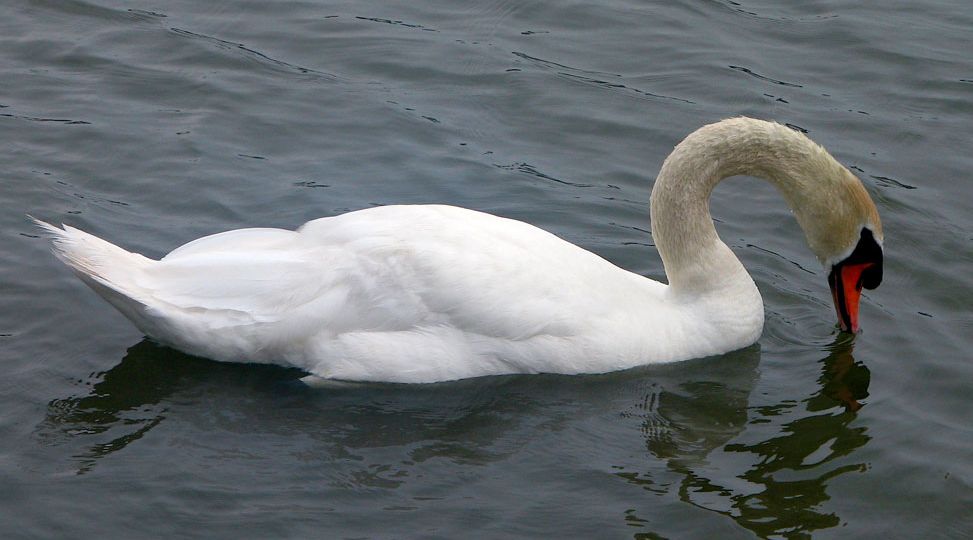
The Ugly Duckling
A Tale of Individuation
Download or listen to this article
Christine Drucker, September 8, 2016
 For typologists interested in the maturation and emergence of the psychological functions, Hans Christian Andersen’s (1844) The Ugly Duckling is of particular interest. This iconic tale draws a vivid picture of what it is like when a child’s natural type is at odds with his circumstances—the awkward chick in a nest not of his choosing. The archetypal push/pull of belonging and rejection comes to life in this story of a swan who was born in the wrong nest, ridiculed for being different, suffered rejection, and eventually emerged as a beautiful bird recognized by his own flock. In the cultural vernacular, the phrase “ugly duckling” describes people who are in an immature state or different than those around them; they have not yet grown into their potential talents or beauty or self-awareness. The tale is a standard in the childhood literary genre and has even been adapted into a musical for grades one through three as a vehicle that “celebrates personal identity and self-esteem” (Popejoy). It endures because it captures the angst of Self-development in terms that any child can relate to, thus teaching important lessons about the lifelong process of individuation.
For typologists interested in the maturation and emergence of the psychological functions, Hans Christian Andersen’s (1844) The Ugly Duckling is of particular interest. This iconic tale draws a vivid picture of what it is like when a child’s natural type is at odds with his circumstances—the awkward chick in a nest not of his choosing. The archetypal push/pull of belonging and rejection comes to life in this story of a swan who was born in the wrong nest, ridiculed for being different, suffered rejection, and eventually emerged as a beautiful bird recognized by his own flock. In the cultural vernacular, the phrase “ugly duckling” describes people who are in an immature state or different than those around them; they have not yet grown into their potential talents or beauty or self-awareness. The tale is a standard in the childhood literary genre and has even been adapted into a musical for grades one through three as a vehicle that “celebrates personal identity and self-esteem” (Popejoy). It endures because it captures the angst of Self-development in terms that any child can relate to, thus teaching important lessons about the lifelong process of individuation.
In particular, The Ugly Duckling serves as a metaphor of the individuation process of an INFJ subtype. While all MBTI® types may see themselves as ugly ducklings in some respect, for INFJs the sense of alienation has typological roots in their statistical rarity. Because they are such rare birds in the population, their sense of being fundamentally different than their families and playmates is almost always appropriate; they often are different from the majority of people around them.
The INFJ function chart reveals introverted intuition (Ni) as the dominant function, extraverted feeling (Fe) as the auxiliary, introverted thinking (Ti) as the tertiary, and extraverted sensing (Se) as the inferior. For the INFJ subtype, the process of relating to others is the dynamic created by the interaction of introverted intuition and extraverted feeling, with extraverted feeling being the primary function used to connect with the phenomenological world. Introverted intuition gives the INFJ the ability to create an inner world that is not always grounded in external reality. Combined with extraverted feeling, introverted intuition also creates the empathic potential to overly merge with the emotions of others. In order to develop their own psychological individuality, it is imperative that INFJs balance their inner lives with doses of extraverted sensing reality and also find a way to distinguish their feelings from those around them in order to effect differentiation, which Daryl Sharp (1991) defined as “the separation of parts from a whole, necessary for conscious access to the psychological functions” (p. 46).
In short, one achieves typological maturity through relationships. Jung (1921/1976) made this point when he wrote that “the unrelated human being lacks wholeness, for he can achieve wholeness only through the soul, and the soul cannot exist without its other side which is always found in a ‘You’” (para. 454). Lenore Thomson (1998) made the point type specific when she wrote: “The INFJ’s sense of physical well-being is very much allied with their relationships and emotional investments. They want very much to be liked, but they’re afraid of being hurt” (p. 248). The challenge, therefore, is for INFJs to engage in relationships in order to grow into their individuality, even though they are sensitive to being hurt. The Ugly Duckling eloquently speaks to this conundrum.
In his book The Seven Basic Plots, Christopher Booker (2004) placed The Ugly Duckling in the category of a “rags to riches” plot line in which “an ordinary, insignificant person, dismissed by everyone as of little account, who suddenly steps to the centre of the stage, [is] revealed to be someone quite exceptional” (p. 51):
A little ungainly duckling, quite different in appearance from all his brothers and sisters, miserable at being ridiculed for his size and clumsiness, sets out into the world where he sees a sight which takes his breath away—some great white birds, more beautiful than anything he has ever known. They are swans, but they fly away for the winter, leaving the duckling more miserable than ever. Finally spring comes, and he sees three swans on a lake. He swims towards the “kingly” birds, fearing that, like everyone else, they will only mock him for his ugliness. He lowers his head in apprehension and catches sight of his reflection in the water. To his astonishment and joy, he sees that, without knowing it, he has become a swan himself—in the words of an onlooker, “the most beautiful of all.”
In Booker’s (2004) schema, “rags to riches” tales unfold in five stages:
- Initial wretchedness at home and the “Call”
- Out into the world, initial success
- The central crisis
- Independence and the final ordeal
- Final union, completion, and fulfillment
Stage One: Initial Wretchedness at Home and the “Call”
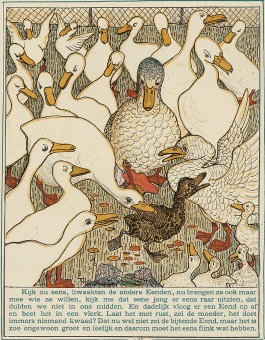 The story begins with a mother duck hatching her brood (Andersen, 1844). After all the other eggs hatch, a large one remains unhatched. An old duck pays a visit, opines that the unhatched egg is a turkey egg, and advises the mother duck to leave it where it is and pay attention to her hatched ducklings. The mother duck ignores her advice, and when the big egg hatches, she exclaims that it is very large and not like the others. She wonders if it perhaps really is a turkey, whereupon she decides to lead it down to the water with the others and see if it can swim (turkeys cannot swim).
The story begins with a mother duck hatching her brood (Andersen, 1844). After all the other eggs hatch, a large one remains unhatched. An old duck pays a visit, opines that the unhatched egg is a turkey egg, and advises the mother duck to leave it where it is and pay attention to her hatched ducklings. The mother duck ignores her advice, and when the big egg hatches, she exclaims that it is very large and not like the others. She wonders if it perhaps really is a turkey, whereupon she decides to lead it down to the water with the others and see if it can swim (turkeys cannot swim).
The hatchling swims quite well, so the mother duck decides to give him a chance: “He is my own child, and he is not so very ugly after all if you look at him properly. Quack, quack! Come with me now, I will take you into grand society, and introduce you to the farmyard” (Andersen, 1844).
What a disaster! Guiding her brood over to meet the aristocratic Spanish duck who rules the farmyard, the mother duck admonishes the ducklings on how to behave: “A well-bred duckling spreads his feet far apart.” Because the Ugly Duckling is gangly and large, he can’t meet the extraverted sensing expectations of duckling beauty and is ridiculed by the Spanish duck. He is then made fun of by others, insulted, and chased around. Even his siblings are mean to him and wish that the cat would get him!
His mother said she wished he had never been born. The ducks pecked him, the chickens beat him, and the girl who fed the poultry kicked him with her feet. So at last he ran away, frightening the little birds in the hedge as he flew over the palings. (Andersen, 1844)
The tale draws the picture of a little creature who just does not fit into the norms of his family or community; even his own mother is not sure if he belongs in her brood. The plot line up to this point reflects the young INFJ’s experience of being an “odd duck.” A person with Ni as the dominant function often reports having a diffused sense of what is going to happen, or a sense of “knowing” that is not based on deductive reasoning from a set of facts. This “knowing” reveals itself in pattern recognition, possibilities, and complex pictures or symbols. Functioning from a dominant Ni mode, INFJs often exhibit more extrasensory perception gifts than other types and “can have uncanny communications with certain individuals at a distance” (Keirsey, 1984, p. 171). This ability gives some INFJs a reputation for being prophets and seers, and they can become subject to ridicule by other types who do not understand them, especially since INFJs themselves have trouble clearly articulating their intuitions. In Archetypal Patterns in Fairy Tales, Marie-Louise von Franz (1980/1997) addressed the issue of the unusual child motif, pointing out that children who are perceived as having a relationship with the unconscious are often characterized as being magicians or frightening in some way: “Everything unusual frightens people. They don’t know how to relate to it because they have no previous experience of it; therefore there is a tendency prematurely to judge the unusual in a negative way” (p. 152). In Andersen’s fairytale, the mother duck’s response to the Ugly Duckling models von Franz’s example: the odd egg in her nest shouldn’t be something other than a duck. Early on, she seeks to confirm that he is a duck but becomes exasperated with his inability to fit into the conventional farmyard social order.
For an INFJ, not fitting into the farmyard social order is a metaphor for the experience of not measuring up to expectations of the American culture, which is dominated by an extraverted thinking (Te) typological orientation. An ESTJ culture values “measurable school facts, observable behaviors, and the limited solutions that follow from a factual approach.” Consequently, the culture “often misses the deeper relational powers, the creative energies and the vital emotionality of the NF” (Giannini, 2004, p. 512).
In the fairytale, the mother duck sharply remonstrates the Ugly Duckling for not being competitive, a vignette that reflects the vocational dilemmas often faced by INFJs. The idea of having to scrabble in the “corporate farmyard” with competitive chickens and cats is distressing; INFJs would much prefer to engage in a vocation that calls them to some higher purpose which does not require them to play politics at work. They are often characterized as being dreamers, reclusive, and non-competitive and are urged to toughen up. They often feel awkward, ungainly, and out of place. In The Introvert Advantage, Marti Olsen Laney (2002) echoed this point: “Since introverts often feel as if something is wrong with them, they try to figure out the ‘right way’ to do things” (p. 14). The strong pull of their Fe function drives the INFJ to develop relational connections by being attentive to the social cues offered by family, school, church, and neighborhood. “Because they have a strong need for approval, they can feel literally split between their Feeling and Intuitive motivations” (Thomson, 1998, p. 248). David Keirsey (1984) pointed out in Please Understand Me that introverted intuitive feeling children “[lack] defenses against behaviors which other types would handle easily” and would be “likely to experience distress if they work with a teacher who uses ridicule or who seems to reject them personally” (p. 120).
In the tale, the Spanish hen represents this dynamic as the acknowledged head of the farmyard pecking order. When denigrated by the Spanish hens in their lives, or when their attempts to be part of the dominant group are not successful, INFJs can be pulled into self-critical cycles, depressions, and desperate efforts to flee the stressful situation. Stage One of the fairytale ends as the Ugly Duckling flies over the hedge, fleeing from overly stimulating and critical circumstances in an effort to find some peace and quiet. What he finds on the other side, however, may be more challenging then he imagines.
Stage Two: Out Into the World
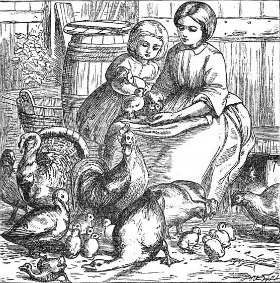 Stage Two represents the protagonist’s first encounter in the wider world. “Although this new phase may be marked by new ordeals the hero or heroine are here rewarded with their first, limited success, and may have some revision of their eventual glorious destiny” (Booker, 2004, p. 66). This stage begins when the Ugly Duckling rushes from the farmyard onto the moor and ends when he leaves the cottage where he takes up refuge. In this phase, he encounters wild ducks, migrating geese, hunters, a hunting dog, an old woman, a tomcat, and a hen. Each encounter makes an impression on him in a negative way; he “suffers because he does not know who he really is” (Booker, 2004, p. 56). As a metaphor for the experience of individuation or growing into awareness of one’s potential, the series of events echoes the life path of many INFJs as they make their first move out into the world. Whether that move is to college, their own apartment, or into a job, INFJs often report that their twenties are times of trying out lifestyles to see what feels right; encounters with people who are different from themselves help focus their self image.
Stage Two represents the protagonist’s first encounter in the wider world. “Although this new phase may be marked by new ordeals the hero or heroine are here rewarded with their first, limited success, and may have some revision of their eventual glorious destiny” (Booker, 2004, p. 66). This stage begins when the Ugly Duckling rushes from the farmyard onto the moor and ends when he leaves the cottage where he takes up refuge. In this phase, he encounters wild ducks, migrating geese, hunters, a hunting dog, an old woman, a tomcat, and a hen. Each encounter makes an impression on him in a negative way; he “suffers because he does not know who he really is” (Booker, 2004, p. 56). As a metaphor for the experience of individuation or growing into awareness of one’s potential, the series of events echoes the life path of many INFJs as they make their first move out into the world. Whether that move is to college, their own apartment, or into a job, INFJs often report that their twenties are times of trying out lifestyles to see what feels right; encounters with people who are different from themselves help focus their self image.
When the Ugly Duckling fled the farmyard, he “closed his eyes and flew still farther” (Andersen, 1844), which is an apt metaphor for the way in which the introverted intuitive screens out the sensing function while heading off into the unknown. With the sensing function in the fourth position, INFJs are not likely to aim themselves into the future based on sensory input; indeed, INFJs seem to propel themselves forward almost in a mad dash. While dominant extraverted thinking types (ENTJs and ESTJs) construct a course of action based on strategy, INFJs blindly hurl themselves into work and college situations, especially if they have not received positive mirroring from those surrounding them during their childhoods. When they land, they are exhausted by the effort of making the transition; all they want is some peace and quiet where they can recuperate and get their bearings.
The Ugly Duckling lands on the moor and runs into wild ducks. “What sort of duck are you?” they ask him. “He bowed to them, and was as polite as he could be, but he did not reply to their question” (Andersen, 1844). Being polite but not really responding would be a typical reaction for an INFJ to make when entering a group, especially one comprised of those who seem “wild,” such as those whose typology exhibits dominant extraverted sensing (Thomson, 1998, p. 246).
After two days, he meets two wild geese who invite him to join them. But as the goslings fly up in the air, hunters shoot them, and hunting dogs splash into the water to find their bodies. The Ugly Duckling is terrified and hides his head under his wings:
A large terrible dog passed quite near him. … He thrust his nose close to the duckling, showing his sharp teeth, and then “splash, splash,” he went into the water without touching him. “Oh,” sighed the duckling, “how thankful I am for being so ugly; even a dog will not bite me.” And so he lay quite still. (Andersen, 1844)
In this moment, the duckling begins to appreciate that there is something in his “ugliness” that acts as a protection against harm. This signals a slight shift in perspective, one that brings with it a sense that there is something worthwhile in the quality that makes one “different.” This scene speaks to the INFJ experience of engaging with the “dog eat dog” world and realizing that there is a value in what has been devalued; INFJs sometimes equate this realization with a sense of being protected by unseen forces. When INFJs share their experiences of their early twenties, it is not uncommon to hear them speak about narrow escapes, close calls, and moments of grace that pulled them back from harm. From such moments, an awareness of the values of the “differentness” comes into focus and can set INFJs onto a path of attending more closely to ways to structure their life journey in harmony with a clearer sense of intuitive gnosis and their feeling, thinking, and sensing functions.
As Stage Two continues, the Ugly Duckling is buffeted by a storm and ends up creeping into a small cottage where an old woman lives with her tomcat and prized hen. She thinks he is a hen and keeps him around for three weeks waiting for him to lay eggs—to no avail! In time, he is chastised as being worthless because he can’t purr like the cat or lay eggs like the hen. To make matters worse, one day he feels a great longing for the water and taking a swim. The hen thinks going for a swim is a silly idea, and she tells the Ugly Duckling, “You have nothing else to do therefore you have foolish fancies. If you could purr or lay eggs, they would pass away” (Andersen, 1844). From the perspective of the INFJ subtype, the hen’s message echoes INFJs’ experience in the work world where being proactive in a proscribed way is expected and valued. INFJs are drained when put in work situations where value is placed on performing tasks that go against their nature. Asking an INFJ to be an outgoing salesperson or a sensate accountant is much like asking a male duckling to purr or lay eggs.
The hen continues to admonish the Ugly Duckling and even calls him “crazy.” Exasperated, he cries out “You don’t understand me!” (Andersen, 1844). What a wonderful moment for the duckling! He has reached a moment of awareness where he can begin to see himself as himself. In the Jungian schema of individuation, the duckling has differentiated himself from those around him enough to verbalize that he knows he has a different approach to life than they do. For the duckling, the “longing for a swim in the water” is what Booker referred to as Stage Two’s “prevision of [his] eventual glorious destiny” (Booker, 2004, p. 66). It is analogous to what Joseph Campbell called “following one’s bliss”:
Go where your body and soul want to go. When you have the feeling, then stay with it and don’t let anyone throw you off … a little intuition of where your bliss is. Grab it. No one can tell you what it is going to be. You have to learn to recognize your own depth. (Campbell, 1991, p. 118)
The duckling becomes aware of his bliss through the vivifying image of swimming in a pond, diving under the water, and popping back up again. Given that Jungians often equate water with the unconscious, an INFJ perspective could take the duckling’s attraction to swimming in water as a metaphor for the INFJ penchant for plumbing the depths with intuition, a different way of being than that followed by sensing types such as the hen.
The duckling leaves the warm cottage and goes back out into the world, where he soon finds a pond. Autumn comes on, and he is sadly alone. Then, one evening, a large flock of white birds flew out of the bushes and took to the sky with a rush, uttering a “singular cry as they spread their glorious wings and flew away”:
As they mounted higher and higher in the air, the ugly little duckling felt quite a strange sensation as he watched them. He whirled himself in the water like a wheel, stretched out his neck towards them, and uttered a cry so strange that it frightened himself. … He knew not the names of these birds nor where they had flown, but he felt towards them as he had never felt for any other bird in the world. He was not envious of these beautiful creatures, but wished to be as lovely as they. (Andersen, 1844)
Stage Three: The Central Crisis; Everything Suddenly Goes Wrong
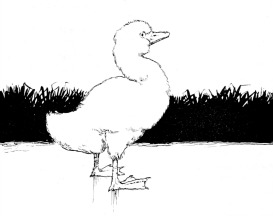 Although the duckling could not name the birds he saw, his inner being responded to them in a way that created a deep upwelling of emotion and happiness for him; he felt an attraction and excitement that was unique in his experience. Glimpsing the swans was a numinous experience that had “a deep emotional resonance, psychologically associated with experience of the Self … the archetype of wholeness” (Sharp, 1991, pp. 92, 119).
Although the duckling could not name the birds he saw, his inner being responded to them in a way that created a deep upwelling of emotion and happiness for him; he felt an attraction and excitement that was unique in his experience. Glimpsing the swans was a numinous experience that had “a deep emotional resonance, psychologically associated with experience of the Self … the archetype of wholeness” (Sharp, 1991, pp. 92, 119).
Without consciously knowing what had happened, the duckling had obtained a fleeting glimpse of his imago—“a living, evolving psychic structure with roots in the archetypal unconscious and ultimately in the self. … It both frees people to be what they most deeply are, and it defines who and what they are and what their lives are about” (Stein, 1998/2005, pp. 133-134). However, as quickly as they appear, the swans fly away, leaving the duckling alone and in despair. The contrast between his joy at seeing the unknown birds and his misery alone on a winter’s pond is the point of crisis.
From the perspective of the INFJ subtype, the image of the duckling seeing the swans evokes the moment when INFJs learn that there are others like them in the world; it has a significant impact on self esteem. “Having proof in the form of scientific research that it’s okay to be different was a powerful force that reduced guilt, shame, and other negative views people had developed of themselves,” wrote Laney (2002) in The Introvert Advantage (p. 13).
However, the duckling will have to endure a frigid winter before he experiences the healing insight triggered by the sighting of the swans. The pond freezes over, and despite his frantic paddling, the duckling becomes frozen in the ice. From the perspective of the INFJ subtype, the image of getting stuck in ice reflects experiences in which the type is unable to connect with the phenomenological world through the extraverted feeling function. The visceral experience is one of being frozen, unable to move or to speak and barely able to breathe. Sometimes this happens when the INFJ is placed in stressful social situations and seems to “clam up” and people ask, “Cat got your tongue?” It can happen when the INFJ is overwhelmed by an emergency (extraverted sensing) and gets feedback that he appears very calm and doesn’t seem “upset” by the situation. On the contrary, the internal experience is not calmness but a quickening of energy, such as the image of the duckling paddling as hard as he can under the surface to keep from getting frozen. And, just like the duckling, the INFJ subtype can end up exhausted and “lay still and helpless, frozen fast in the ice” (Andersen, 1844).
In her book The Abandoned Child Within, Katherine Asper (1993) discussed the symbolism of ice and glass in fairytale images:
As a metaphor for a person’s psychic state, glass stands for the inability to experience oneself and the world as real and as part of oneself. Glass symbolizes the loss of vitality, the lack of animation. Ice fits in with this too; in winter it covers up the surface of the pond, which is teeming with life. Ice and glass graphically describe the condition of a person whose feelings have frozen, who probably still recognizes them but no longer experiences them. (p. 129)
For INFJs, extraverted feeling as the auxiliary function serves as the main way of relating to the world. To have a frozen feeling function cuts INFJs off from others and plunges them into introverted feeling in an ego-dystonic mode that presents itself in fears of being incompetent, becoming critical of others, and being hypersensitive to perceived slights (Quenk, 2002, p. 83).
Stage Four: Independence and the Final Ordeal
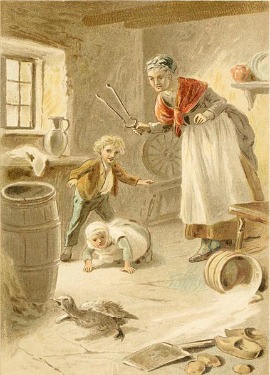 In Stage Four, Booker (2004) wrote, the heroes or heroines come out of the crisis and reveal “a new independent strength” that is put to a “final test involving a battle with some powerful dark figure who stands, as a dark rival, between them and their goal; and this forms the climax to the whole story” (p. 66). For the Ugly Duckling, this last test is to endure winter on his own in the moors.
In Stage Four, Booker (2004) wrote, the heroes or heroines come out of the crisis and reveal “a new independent strength” that is put to a “final test involving a battle with some powerful dark figure who stands, as a dark rival, between them and their goal; and this forms the climax to the whole story” (p. 66). For the Ugly Duckling, this last test is to endure winter on his own in the moors.
As the story continues, a peasant comes along and uses his wooden shoe to break the ice and rescue the duckling from the frozen pond. In Archetypal Patterns in Fairytales, Marie-Louise von Franz (1997) noted that the peasant figure “represent[s] simple common sense,” and “a kind of realistic attitude to his surroundings” (p. 75). In the INFJ’s life experience, such people might be teachers, relatives, or friends who are sensate, grounded, and in touch with their instincts. They know what to do, and they do it. In the tale, the peasant takes the duckling home to his wife.
The duckling revives in the warm kitchen, but then a series of disasters befalls him: the children frighten him, he turns over the milk pan, and he ends up making a mess in the kitchen. In a panic, he escapes out the open door and collapses in the snow. Poor duckling! Any INFJ reading this scene can commiserate with the duckling’s confused response to over-stimulation in an unclear social situation. When stressed by hunger, cold, and fatigue, INFJs need quiet moments to recuperate. If, instead, they are subjected to an environment that is noisy and filled with overt extraverted types, they can react blindly:
For Introverted Intuitive types in the grip of inferior Extraverted Sensing, the immediate reality of the outer world spells difficulty and danger. They expect obstacles and problems to plague them as they move through a strange and potentially hostile environment. (Quenk, 2002, p. 201)
As intuitive feelers, INFJs seek meaningful relationships and can become disoriented and apathetic when placed in situations that appear to them to be hostile. For intuitive feelers (NFs) as a whole, self-identity is intimately tied up with the mirroring they receive from relationships; when they are in groups that contradict their natural tendencies, they can lose touch with themselves. They feel unacceptable to others. “Eventually, they begin to feel apathetic and listless” and “will report that they don’t know what they feel—they just know they aren’t happy, and they don’t understand why. … Typically, all they notice is the absence of good feelings” (Delunas, 2010, p. 135). Like the duckling slipping out of the door and lying down in the snow, they go unconscious.
The duckling endures a difficult winter. Although the tale doesn’t dwell on how he survives, it is clear that it takes determination for him to make it through until spring. Then, one morning he feels the sun on his back, spreads his strong wings, and flies into the air. In an alchemical move, the duckling has been transformed into a grown bird with strong wings that take him aloft and into a beautiful garden (Andersen, 1844). He has discovered his “new independent strength” (Booker, 2004, p. 66). Suddenly, the icy cold is gone, and he is in a world dominated by the senses; his awareness of his extraverted sensing function has opened in a positive way. When the duckling wakes up in the springtime, he is like an intuitive discovering the reality of his sensing function, and he begins to experience a new identity.
For the INFJ, the image of the duckling’s arrival in the garden represents the experience of a healing return to one’s senses when emerging from a stressful situation. “Some examples of methods Introverted Intuitive types use for returning to normal include submerging themselves in peaceful, quiet, natural surroundings, being outdoors and looking at nature” (Quenk, 2002, pp. 207-208). When the duckling realizes he has the capacity to fly to a beautiful garden, his actions speak to the INFJ’s emerging awareness of the sensate world as a pleasurable place to be. The duckling is now liberated to move to the final stage of his tale.
Stage Five: Final Union, Completion, and Fulfillment
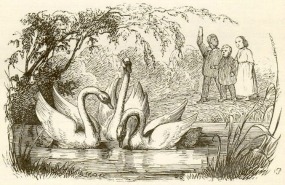 In the final stage, the heroes or heroines lovingly unite with their perfect mates and “may also succeed to some kind of ‘kingdom,’ the nature of which is not spelled out but which, from their mature and developed state, implies a domain over which they will rule wisely and well.” The story ends with “an image which signifies a perfect state of wholeness, lasting indefinitely into the future (‘they lived happily ever after’)” (Booker, 2003, p. 66). From a Jungian perspective, Stage Five is individuation, “a process of differentiation, having for its goal the development of the individual personality” (Jung, 1921/1976, para. 757, emphasis extant). In the fairytale, Stage Five brings the duckling into recognition of who he really is—namely, a swan.
In the final stage, the heroes or heroines lovingly unite with their perfect mates and “may also succeed to some kind of ‘kingdom,’ the nature of which is not spelled out but which, from their mature and developed state, implies a domain over which they will rule wisely and well.” The story ends with “an image which signifies a perfect state of wholeness, lasting indefinitely into the future (‘they lived happily ever after’)” (Booker, 2003, p. 66). From a Jungian perspective, Stage Five is individuation, “a process of differentiation, having for its goal the development of the individual personality” (Jung, 1921/1976, para. 757, emphasis extant). In the fairytale, Stage Five brings the duckling into recognition of who he really is—namely, a swan.
The denouement begins with three beautiful white swans emerging from the thicket, swimming towards him. He remembers them from before but feels “more strangely unhappy than ever” (Andersen, 1844). This seems odd since he felt so joyous the last time he saw them. From feeling an uncommon bliss to feeling strangely unhappy is a big shift; what could be the cause? Months before, a longing to be like them had washed over him in his first glimpse of his innate nature, and he had tried to follow them in his bliss. However, when he sees them in the spring, his joy is tempered. The bliss has been replaced by a dread that he is not worthy of their positive attentions. Nevertheless, he swims out to greet the three swans, even though he is saying to himself, “They will kill me, because I am so ugly and dare to approach them; but it does not matter: better be killed by them than pecked by the ducks, beaten by the hens … or starved with hunger in the winter” (Andersen, 1844). For INFJs, this scene symbolizes the quest for self-realization and being compelled to go forward into the unknown, even when past experiences hold little comfort.
As the swans rush to meet him, the duckling says, “Kill me”:
He bent his head down to the surface of the water and awaited death. But what did he see in the clear stream below? His own image; no longer a dark, gray bird, ugly and disagreeable to look at, but a graceful and beautiful swan. (Andersen, 1844)
Glimpsing the beauty of his “true self” in the smooth undistorted water, the Ugly Duckling sees himself transformed from a grey duckling into a beautiful swan. This experience demonstrates the kind of paradigm shift that is characteristic of introverted intuitives when they calm their minds through meditation and/or immersion in nature during which they see the beauty of their eternal Self, often as an image of calm water. Then, the trials and tribulations of life somehow make sense, like puzzle pieces falling into place. Suddenly, the Ugly Duckling appreciates the struggles he has endured up to this time:
To be born in a duck’s nest, in a farmyard, is of no consequence to a bird if it is hatched from a swan’s egg. He now felt glad at having suffered sorrow and trouble, because it enabled him to enjoy so much better all the pleasures and happiness around him; for the great swans swam round the new-comer, and stroked his neck with their beaks as a welcome. (Andersen, 1844)
The telos in the Ugly Duckling’s saga is to recognize who he really is and to join with others of his flock. Therefore, being born in a duck’s nest in a farmyard really is of no ultimate importance since his fate, his daimon, is to be a swan. From a typological perspective, the scene speaks to the experience of finding one’s place and one’s flock by connecting with others of one’s type and appreciating the qualities that make everyone unique.
The tale concludes with children on the shore spotting him, clapping their hands in joy, and throwing cake into the water while exclaiming, “’The new one is the most beautiful of all; he is so young and pretty.’ Even the old swans bowed their heads before him.” The duckling has a momentary feeling of shame and hides his head under his wings:
For he did not know what to do, he was so happy, and yet not at all proud. Then he rustled his feathers, curved his slender neck, and cried joyfully from the bottom of his heart. “I never dreamed of such happiness as this, while I was an ugly duckling!” (Andersen, 1844)
The metamorphosis of the duckling into a swan and his integration into a flock of three other swans create a circular arrangement of four beings. From a Jungian view, the number four is significant and is referred to as the “quaternity,” which “psychologically … points to the idea of wholeness” (Sharp, 1991, p. 110). For Jung, the “Self” was “the archetype of wholeness and the regulating center of the psyche; a trans-personal power that transcends the ego” (Sharp, 1991, p. 119). Typologically, the foursome of swans represents wholeness as the act of becoming conscious of one’s four functions in a way that assists one to live authentically.
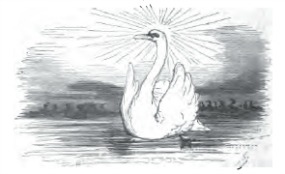 The story contains elements that are particularly true for the INFJ subtype, such as feeling like an “odd duck,” possessing gifts that do not always mesh with ESTJ societal norms, and having to learn to cope with extraverted sensing challenges. The moment of completion and fulfillment speaks to the INFJ innate quest for achieving individuation through harmonious relationships. Finding one’s flock and receiving acknowledgement for being one’s authentic self are lifelong goals of the INFJ subtype. For INFJs, the image of the Ugly Duckling growing into a beautiful swan is a powerful and transformative symbol of hope and fulfillment. And as a metaphor for differentiation and the individuation process in general, The Ugly Duckling illuminates the individual’s struggle to separate from the demands of others while moving towards the moment of recognition of the value and beauty of its essential self. This journey is not unique to the INFJs as all types struggle with the integration of their inferior functions and can take heart from the Ugly Duckling’s tale.
The story contains elements that are particularly true for the INFJ subtype, such as feeling like an “odd duck,” possessing gifts that do not always mesh with ESTJ societal norms, and having to learn to cope with extraverted sensing challenges. The moment of completion and fulfillment speaks to the INFJ innate quest for achieving individuation through harmonious relationships. Finding one’s flock and receiving acknowledgement for being one’s authentic self are lifelong goals of the INFJ subtype. For INFJs, the image of the Ugly Duckling growing into a beautiful swan is a powerful and transformative symbol of hope and fulfillment. And as a metaphor for differentiation and the individuation process in general, The Ugly Duckling illuminates the individual’s struggle to separate from the demands of others while moving towards the moment of recognition of the value and beauty of its essential self. This journey is not unique to the INFJs as all types struggle with the integration of their inferior functions and can take heart from the Ugly Duckling’s tale.
References
Andersen, H. C. (1844). The ugly duckling. (Retrieved July 2016).
Asper, K. (1993). The abandoned child within: On losing and regaining self-worth (S. Rooks, Trans.). Germany: Fromm International.
Booker, C. (2004). The seven basic plots: Why we tell stories. New York, NY: Continuum Books.
Campbell, J., & Moyers, B. (collaborator). (1991). The power of myth. New York, NY: Anchor Books, Random House.
Delunas, E. (2010). Survival games personalities play. Carmel, CA: SunInk Publications.
Giannini, J. (2004). Compass of the soul: Archetypal guides to a fuller life. Gainesville, FL: Center for the Application of Psychological Type.
Jung, C. G. (1921/1976). ). Psychological types (H. Read et al., Eds.), The collected works of C. G. Jung (R. F. C. Hull, Trans.) (Vol. 6). Princeton, NJ: Princeton University Press.
Jung, C. G. (1954/1966). The practice of psychotherapy (2nd ed.) (G. Adler & R. F. C. Hull, Eds.). The collected works of C. G. Jung (Vol. 16). Princeton, NJ: Princeton University Press
Keirsey, D., & Bates, M. (1984). Please understand me: Character and temperament types. Green Valley Lake, CA: Prometheus Nemesis Book Company.
Laney, M. O. (2002). The Introvert advantage: How quiet people can thrive in an extrovert world. New York, NY: Workman Publishing Company.
Popejoy Schooltime Series (retrieved July 2016). The ugly duckling. schooltimeseries.com. Albuquerque, NM: University of New Mexico.
Quenk, N. (2002). Was that really me? How everyday stress brings out our hidden personality. Mountainview, CA: Davies-Black Publishing.
Sharp, D. (1991). Jung lexicon: A primer of terms and concepts. Toronto, Canada: Inner City Books.
Stein, M. (1998/2005). Transformation: Emergence of the self. College Station, TX: Texas A&M University.
Thomson, L. (1998). Personality type: An owner’s manual. Boulder, CO: Shambhala Publications.
von Franz, M.-L. (1980/1997). Archetypal patterns in fairy tales. Ed. D. Sharp. Toronto, Canada: Inner City Books.
Images
Cygnus Swan drinking, Scrumshus, Public domain, via Wikimedia Commons
Theo van Hoytemastraat, lithograph for “The Ugly Duckling,” p. XII (1893). Amsterdam: CM van Gogh.
Alfred Walter Bayes, illustration for “The Ugly Duckling” (1895).
William Heath Robinson, illustration for “Hans Andersen’s Fairy Tales,” p. 275 (1913). London: Constable.
Alfred Walter Bayes, illustration for “Stories for the Household” (1866). London: G. Routledge and Sons.
Vilhelm Pedersen, illustration for “The Ugly Duckling” (date unknown).
Bertall, illustration for “The Ugly Duckling” (1860s).



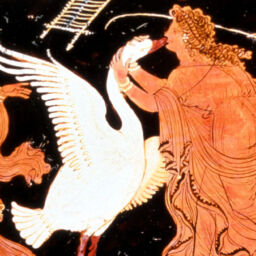
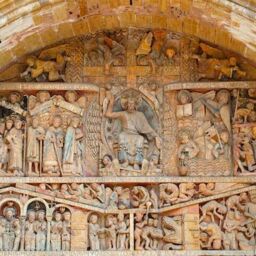
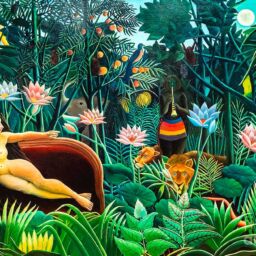
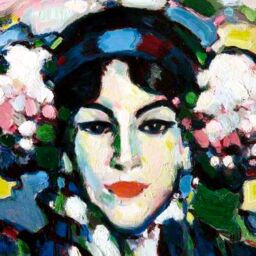
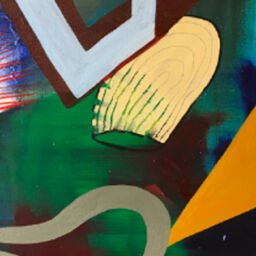
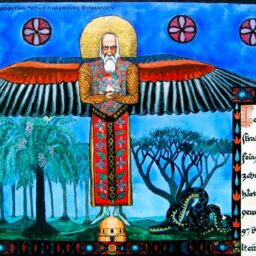
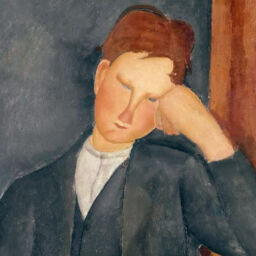
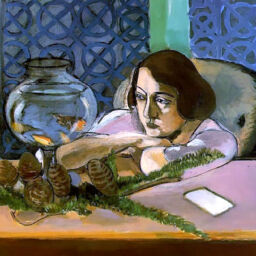
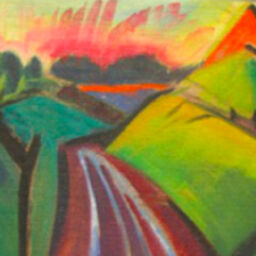
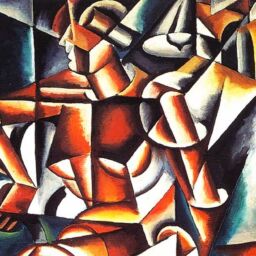
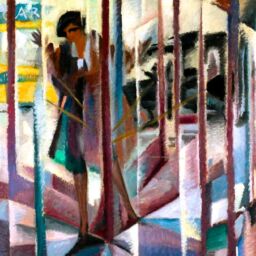
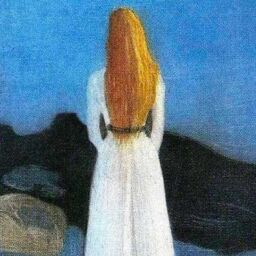

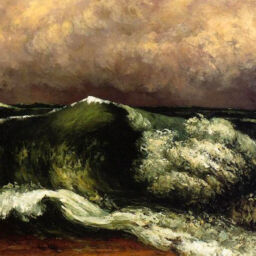
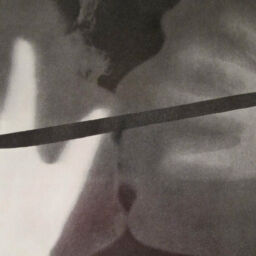
I am truly grateful I came across your article. It gives me a great deal of comfort knowing that all of the INFJ’s suffering and struggling is finite and necessary to get to a place of integration and serenity.
Stunningly insightful! Thank you so much for this article. It put into words my life story.
Thank you so much for this. Beautifully written and insightful article, as others have said. I also felt some tears well up, as moving at times too. Even inspired to try and read original fairy tale 🙂
Thank you for this illuminating and beautiful analysis!
Dear Dr. Drucker,
A beautiful piece read by this ENFJ. Always loved this story for its message of transformation and recognition. It’s been said that St. Francis was an INFP, those who wear their fur “on the inside.” I can identify more with the J; we like to get the job done!
I’d like to think there is also some saint out there for we E’s with that NF quality. Maybe you could enlighten me.
Kindly,
Mary Jane
Insightful analysis that goes through type development unto individuation of an INFJ.
As an INFJ, so much of what you wrote rang true, dredging up painful individuation memories, but now having just completed 50 years and with the gift of type, I can appreciate much better. Your article cemented many things I always knew as true. Deep and insightful. Thanks a lot, Christine!
Christine,
This is such a beautifully written and insightful piece I was enthralled by your analysis. As and ENFJ, I could relate to the plight of the Ugly Duckling in so many (yet maybe not specific) ways; the story mirrored my own story of individuation. Thank you for providing this piece that illustrates the importance and deep work of Jungian individuation.
Warmly, Cindy Paris